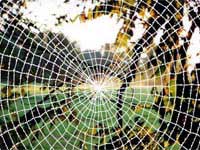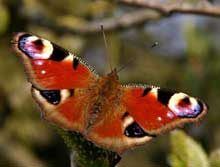In the vast ecosystem of the natural world, whether on land or beneath the sea, various plant and animal species exhibit phenomena that are considered extremely special. These unique characteristics serve as an endless source of inspiration for innovations that are applied in human life.
From Spider Silk to Bulletproof Vests It is astonishing how a seemingly fragile web woven from the silk of a spider can become an effective weapon for capturing prey. According to scientific research, the elasticity of spider silk is five times greater than that of a steel mesh. Moreover, it possesses a tensile strength that far exceeds the materials used to create bulletproof vests.
It is astonishing how a seemingly fragile web woven from the silk of a spider can become an effective weapon for capturing prey. According to scientific research, the elasticity of spider silk is five times greater than that of a steel mesh. Moreover, it possesses a tensile strength that far exceeds the materials used to create bulletproof vests.
Scientists have studied and extracted genes from the silk produced by spiders, incorporating these genes into cow milk cells. The silk obtained from this genetic engineering process is then used to weave sheets that, when combined, create a specialized material with exceptional properties, allowing for the production of highly effective bulletproof vests.
From Abalone Shells to Windshields
The exterior of the abalone shell is rough and brown, yet inside, it contains muscle and layers of nacre. The crystals in the nacre layer are arranged in an orderly, layered structure, with a viscous membrane made of protein and sugars between them. Additionally, the liquid within the abalone shell exhibits chemical luminescence effects; as the first layer stabilizes, the other crystals stack naturally, forming a shell surface with significant hardness. This principle of abalone shell formation can be utilized to create crystals for manufacturing automotive windshields. According to scientists, these windshields have great hardness and elasticity. When subjected to strong forces, they not only resist breaking but also have a shock-absorbing effect.
From Gecko Feet to Climbing Shoes
Geckos are reptiles capable of effortlessly climbing walls and even moving upside down on ceilings without falling. On the ground, they can also move very quickly. This remarkable ability is due to the tiny hair-like structures on their feet that secrete a special adhesive substance, which is not sticky. When climbing, this secretion allows them to adhere firmly to surfaces. Conversely, when on the ground, their bodies stop producing this adhesive.
If we leverage the principles of this reptile’s abilities to develop gloves or climbing shoes, humans could scale cliffs without any safety gear. Furthermore, if special shoes were designed for astronauts, they would no longer need to wear thick and heavy boots while walking in space.
From Colorful Butterfly Wings to Reflective Coatings
 When you see a butterfly fluttering in the air, do not mistakenly believe that its wings are inherently multi-colored. In reality, butterfly wings possess a layered structure of overlapping scales that refract sunlight, creating their vibrant colors. This principle can be applied to produce reflective coatings that enhance the durability and aesthetic appeal of various materials.
When you see a butterfly fluttering in the air, do not mistakenly believe that its wings are inherently multi-colored. In reality, butterfly wings possess a layered structure of overlapping scales that refract sunlight, creating their vibrant colors. This principle can be applied to produce reflective coatings that enhance the durability and aesthetic appeal of various materials.
From the Glowing Eyes of Wolves to Traffic Reflectors
When driving on highways or hilly roads at night, you may notice that your car’s headlights reflect off mirrors or traffic reflectors along the roadside. However, once you pass, these reflectors seem to lose their effectiveness. In fact, this application is based on the reflective properties found in the eyes of animals such as cats, wolves, and bears. Scientists have creatively utilized this principle to create road signs that shine at night, helping drivers recognize other objects on the road and enhancing safety in traffic.


















































